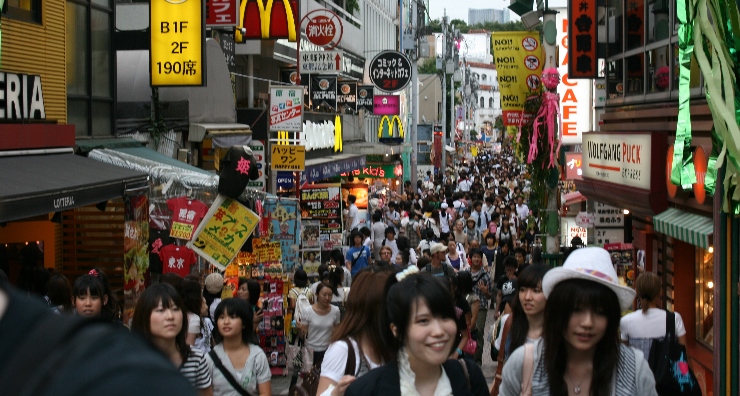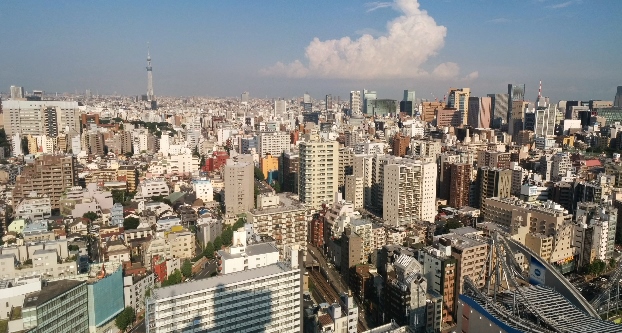Driving commercial and political engagement between Asia, the Middle East and Europe
Driving commercial and political engagement between Asia, the Middle East and Europe
Driving commercial and political engagement between Asia, the Middle East and Europe

Pundits have christened Japanese snap elections with descriptive and sometimes colourful names. These include former Prime Minister Eisaku Sato’s 1966 ‘black fog’ election to deal with the aftermath of a political scandal, Yasuhiro Nakasone’s 1986 ‘playing dead’ election marked by a bluff about his intent to dissolve the parliament, and Junichiro Koizumi’s 2005 ‘postal reform’ election to achieve postal privatisation.
Many in Japan have suggested calling Japan’s December 14 election—which cost nearly 70 billion yen (more than US$500m) of taxpayer money but witnessed the lowest voter turnout ever—‘the meaningless election.’
There was also little change in the distribution of seats. The ruling coalition maintained its numbers (the Liberal Democratic Party (LDP) lost three seats but its junior coalition partner, Komeito, gained four, for a total of 326 seats out of 475) while the fractured opposition, the Democratic Party of Japan (DPJ), gained only 11 for a total of 73—far short of its goal of 100—and the Japan Innovation Party lost one seat. This snap poll might also be called the ‘election of no alternatives.’
On the electoral trouncing, the Asahi Shimbun reported that 59 per cent of respondents believed the ruling coalition had too many seats versus 21 per cent who thought the number was just right. More damningly for the administration, only 11 per cent saw the election results as an approval of Abe’s policies whereas 72 per cent said they were because the opposition held no attraction for voters. Indeed, only eight per cent of those polled thought they could entrust the government to one of the opposition parties. Therefore, this was hardly a vote of approval for the LDP, Shinzo Abe, or his economics.
But now that Abe has managed to renew his mandate by taking advantage of no viable alternatives, what can we expect in Japanese politics over the next up-to-four years of his leadership (assuming he wins the LDP presidency in September 2015, which he almost certainly will)?
Domestic economy
The advertised reason for dissolving the parliament was to delay enactment of the consumption tax, which was slated to go up from eight per cent to 10 per cent next year.
Given that many considered the consumption tax hike from five per cent to eight per cent in April 2014 a major contributing factor in Japan’s latest recession, Abe will likely hold off on any further increases until at least 2017.
Assuming other economic indicators continue to move in the right direction, the prospect of a long-standing prime minister after many years of both flux and regime change could lead to increased consumer confidence and spending. After all, Abe’s reflationary policies have had an effect: unemployment is low and the yen has significantly weakened against the dollar, making Japan’s exports more competitive.
Structural Reforms
However structural reforms, the third arrow in the Abenomics quiver, will be the most politically difficult to shoot (the first arrow was monetary easing and the second was fiscal stimulus).
To be successful Abe will have to overcome factions within his own party and the interest groups that support them, including the traditional LDP stronghold—the agricultural lobby. The government is already reforming the corporate tax—one of the highest rates in the industrialised world at an effective 35 per cent—but this is easy to pursue, compared to reforms in the ‘bedrock’ regulations of farming, medical services, and the labour market.
The last prime minister to take on such major structural reforms was Koizumi. Yet Koizumi, who vowed to destroy his own party (the LDP), had the public on his side. Abe has neither Koizumi’s charisma nor support from within his party nor from the public, factors that will make it difficult to see through the massive changes he envisions. Moreover, only a fundamental shift in corporate culture and working conditions will make good jobs available and attractive to young people, women, and foreigners.

Modern-day Tokyo with Tokyo Skytree visible in the background. Photo by Crystal Pryor
Trans-Pacific Partnership
Japan has been participating in the US-led Trans-Pacific Partnership (TPP) negotiations since last summer. The latest elections in Japan and the midterm elections in the United States (specifically, Republicans gaining control of the Senate) could bode well for the possibility of Japan joining, although it is far from a done deal. Such a move would be significant for the United States, which currently does not have a free trade agreement with Japan, and would put considerable pressure on Japan to liberalise its markets. Joining the TPP could be a way for Abe to highlight the need for structural reform while allowing external pressure to drive the changes.
Security Policy
While there has been much coverage of the three arrows of Abenomics, there have been at least four important security-related changes under the Abe administration. These include the establishment of a National Security Council and a state secrecy law late last year, and Cabinet decisions to relax Japan’s 1967 self-imposed arms export ban and reinterpret its collective self-defence stature this year.
Abe may have wanted to use his economic achievements to drive through a conservative, security-forward, nationalist agenda. Yet the LDP does not have the two-thirds majority it needs to push bills through the lower house without Komeito, whose constituents are dovish on security policy. Combined with the Communist Party’s increased presence, there will be plenty of antagonism toward a revision of Japan’s so-called Peace Constitution, which many analysts see as Abe’s ultimate goal. It is unlikely we will see constitutional revision—at least of its crown jewel, Article 9, which renounces Japan’s right to war and a military—under Abe’s watch. In any case, the public is significantly less concerned about national security than it is about getting the economy back on track while also ensuring their social security benefits. Abe would do well to focus on the economy, where he is poised to make progress if he can muster the political will.
Energy policy
One final area to watch is the restarting of Japan’s nuclear reactors. The major parties carefully avoided making this a campaign issue, but formally both the DPJ and Komeito aim for a nuclear-free Japan. After the Fukushima meltdown, most Japanese citizens are against restarting the reactors, although as with security policy, Abe may find the public permissive as long as they see progress on an issue closer to home: the economy.
In short, if Abe plays his cards right and the election of no alternatives permits thoroughgoing structural reform, perhaps it won’t have been so meaningless after all.
Crystal Pryor is a Political Science Ph.D. Candidate at the University of Washington. She lived in Japan for seven years, during which time interned for an LDP think tank, obtained a Master’s Degree in Political Science from the University of Tokyo, and worked at the U.S. Embassy. Her dissertation is a comparative study of strategic export control policies in Japan, the United Kingdom, the United States, and France.
Director-General, Economic & Consular at the Foreign and Commonwealth Office Sir Julian King KCVO CMG will give a private briefing exclusively for Asia House corporate members on 7 January focusing on China, followed by a roundtable discussion. For more information click here.
Have you considered becoming a corporate member of Asia House? Find out more here.
